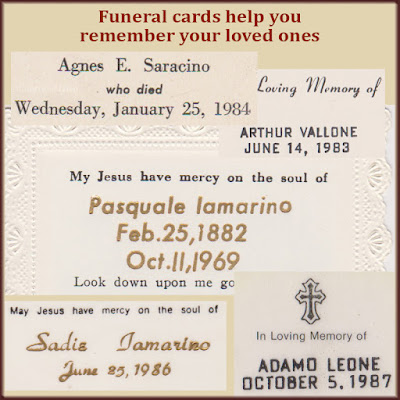It isn't to late to set some goals for the year. Set reachable goals and reap the benefits.
Goals give you a purpose and direction. It can be fun to let your genealogy research lead you wherever it wants. But goals lead to more productive research.
I set 7 genealogy goals for 2019. The first 3 are finite goals. They aren't "I hope I can discover…". They are "do this task until it's finished".
Here's where I stand with my first three 2019 Genealogy Goals:
1. Log the first five years' worth of birth records from each town into spreadsheet
This one is done! I want to create a digital, searchable database of every key fact from 1000s of documents. I downloaded birth, marriage, and death records from my 6 ancestral Italian towns. They start in 1809, and some go into the 1940s.
Because it's an insanely big project, I broke off a chunk—5 years of birth records—to encourage myself to get into it. I'd already transcribed a good amount of the 1809–1813 births, so this wasn't an accurate test of how long the whole project will take.
But the benefits are real. After I finish the next 2 goals, I want to work on the 1814–1818 birth records. That eagerness to continue is exactly what I was shooting for.
2. Search for all missing census forms in my document tracker
 |
| Dive in and start those goals. Look what I found in 3 sessions. |
I'm going through the alphabetical list of people in my document tracker spreadsheet. I'm focusing on which names have a missing census form in their "Need to find" column.
Right now I'm into last names beginning with C, and it's been a very satisfying three days. I've added a lot of missing documents to my family tree.
Sometimes while searching for a census form, I can't help but see the death record or marriage index that I was missing. So I'll grab those while I'm at it, too.
The important thing to remember is to stick to your process and handle each document carefully. My routine when finding a new document image is to:
- Crop it in Photoshop if needed.
- Rename it using the style I've developed. My file naming rules make it easier to find any document.
- Add it to the family tree record of each person named on the document. That means each family member on the census form gets a copy of the census sheet in Family Tree Maker.
- Add each fact and the source citation to each person. Each family member will get a Residence fact based on the census image. Those with a job will get an Occupation fact, too. And all facts get the proper source citation. Other facts can include immigration year, naturalization year, birth and marriage years.
- Update my document tracker spreadsheet. This is my inventory and to-do list rolled into one. It's important that I keep it accurate.
One thing I decided after starting this goal was to be reasonable. If several search techniques don't get me the census I need, I will move on. The important thing is to make a good effort.
 |
| You can add notes and a title to every document image you collect. |
3. Enter every Pozzuto baby from Colle Sannita into my family tree
I started this goal last year. A DNA analysis method pointed me to a specific last name from my grandfather's hometown. Someone with this name is highly likely to be a direct ancestor for both my parents. Their DNA says they are 4th to 6th cousins. My true goal is to find my parents' connection by analyzing these babies.
I'm working my way through my downloaded collection of vital records from Grandpa's town, adding each of these babies to my tree. I add their parents and try to ID their grandparents. If they aren't connected to anyone in my family tree yet, I give them a profile picture that says "no relationship established". If I find their connection later, I'll be sure to remove their relationship graphic.
It's still January, and I'm having an insanely productive genealogy year already. I plan to bounce between goals 2 and 3 to avoid boredom. That'll make me feel like I'm accomplishing more, too.
It's still January, and it's only January. Have you set your 2019 Genealogy Goals?



